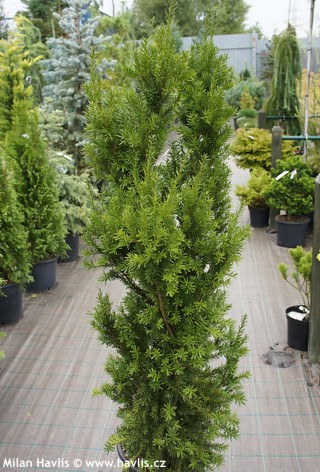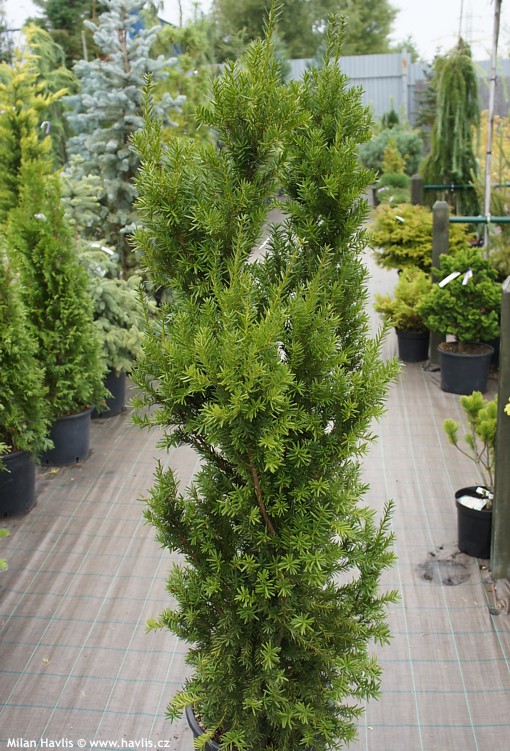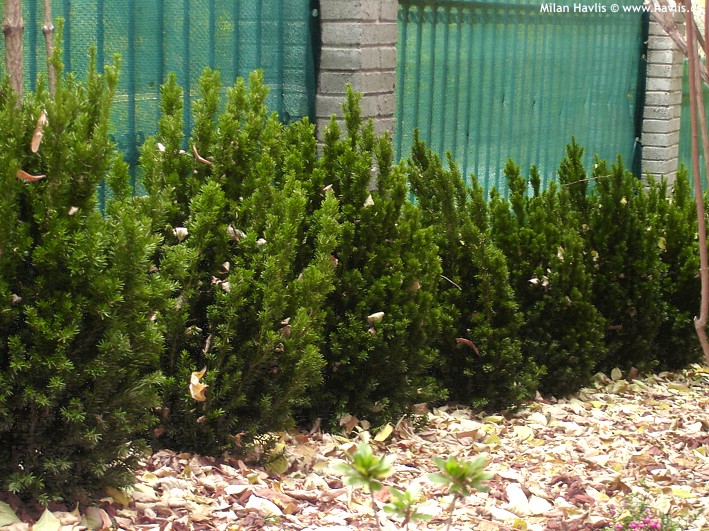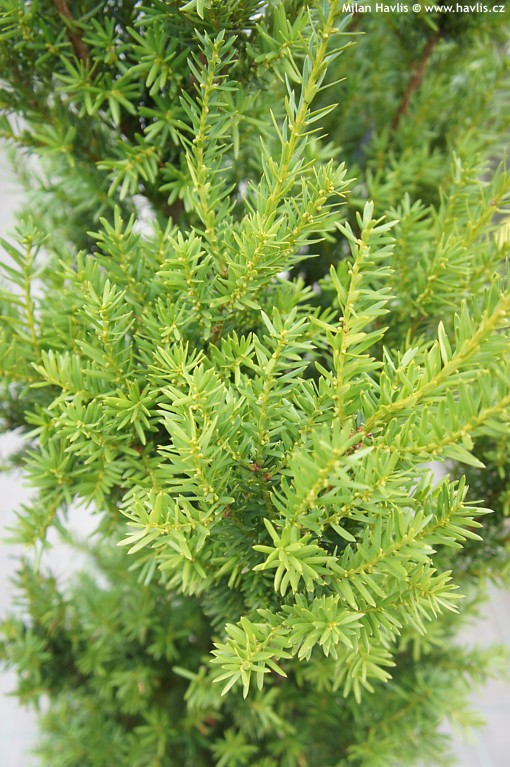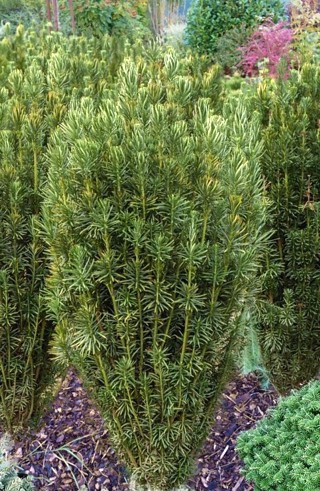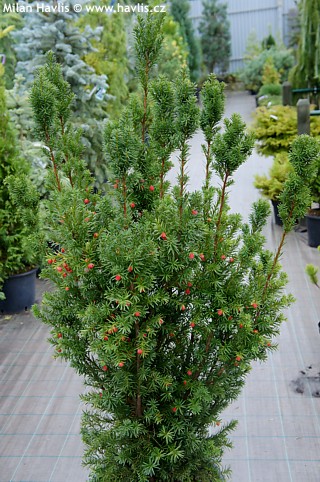Taxus x media 'HILLII' yew
size/type
medium-sized shrub,medium-sized shrub
usual height
2-3,5m
usual width
0,5-1,5m
leaves
evergreen conifer
colour of leaves
flowers
insignificant or non-blooming
location
full sun to shade
USDA zone (lowest)
4 (down to -34°C)
winter protection
for zone 5+6

for zone 7

categorized
Taxus
Yews could be called common shrubs, where common not only means omnipresent but mainly dull. Well, perhaps for someone. We see yew and predominantly its varieties as very useful and attractive features of gardens of almost any size. They vary by size, shape and even foliage colour.Description of the plant:
This yew is a cross between taxus baccata and taxus cuspidata and is called Hillii. It is a small to medium sized shrub of very dense, columnar habit when young, opening slightly at the top with age, with lustrous, soft green needles in summer with golden yellow hues in autumn and winter. This plant grows much slower than common yew and makes a beautiful specimen or an informal hedge. Its keeps its foliage all over the plants and does not lose needles along bottoms stem similarly to the yew species. This variety is FRUITLESS.Now a few words about its toxicity. The whole plant is slightly poisonous for humans but extremely poisonous for horses. Its beautiful red fruits, if the concrete variety produces them, are also said to be dangerous for people but the truth is that only the seeds contain a certain amount of substance that could be dangerous only if bitten into. As a matter of interest the flesh of the berries is found sweet and delicious for many and if the seed is spat out you can expect no harm. Also, tests proved that seeds not bitten into will go through the digestion system causing no harm. Well, our final suggestion is to use this plant as a decorative item in your garden, not a dessert.
Yews are easy to grow. They can take almost any soil type from acidic to alkaline, even wet conditions. They will do well in full sun as well as shade. They respond very well to pruning and can be pruned hard. This variety is extremely hardy that withstands severe winds and frosts down to -34°C (USDA zone 4).
Last update 25-11-2010, 02-01-2012; 13-09-2014
QUICK PRICE OVERVIEW
CURRENTLY SOLD OUT












